Car Dashboard Symbols and Meanings Ford: Warnings!
Ford dashboard symbols encompass a variety of icons representing warnings, maintenance needs, vehicle status, and safety systems.
For Ford vehicle owners, it’s essential to recognize these dashboard symbols to maintain vehicle performance and safety on the road.
From the check engine light to the tire pressure monitoring system, each symbol has a specific meaning and corresponding action that should be taken.
Dashboard symbols in Ford cars can be categorized into several types:
For example, a red temperature warning light suggests the engine is overheating, requiring the driver to stop the vehicle and allow it to cool down.
Recognize Ford dashboard symbols to ensure your vehicle’s longevity and your safety on the road.
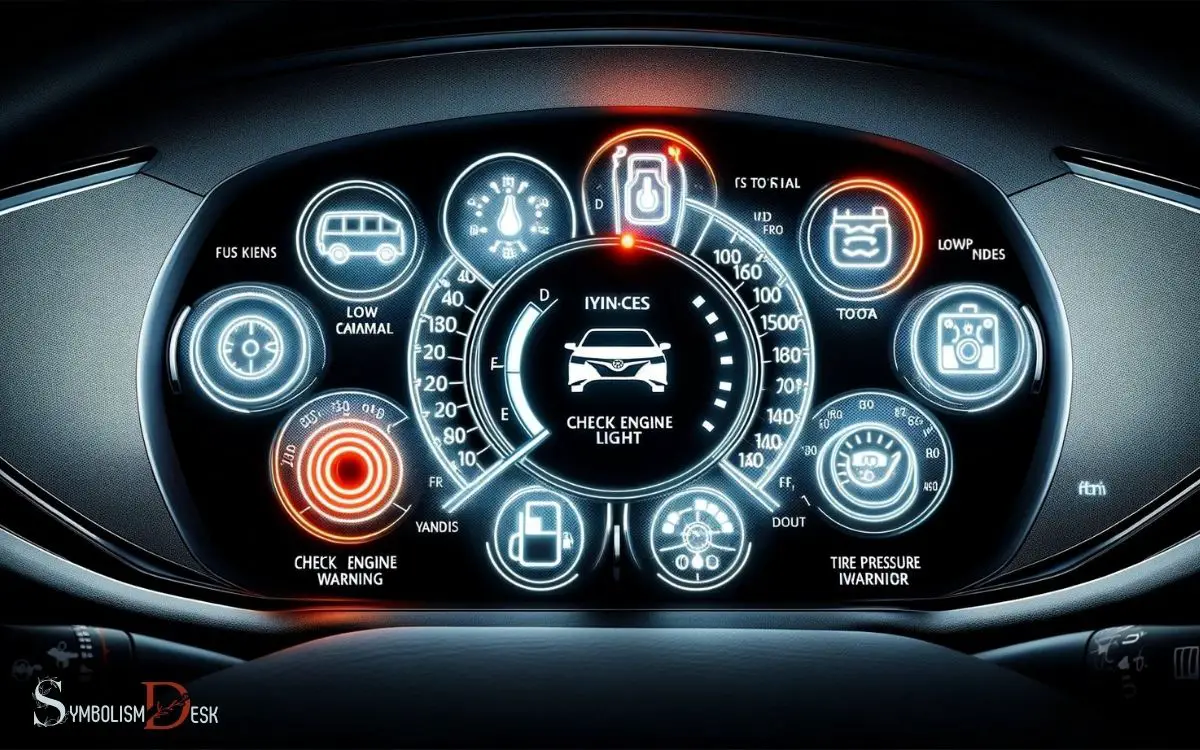
Key Takeaway
Comprehensive Chart to Ford Dashboard Symbols and Their Meanings
| Symbol | Color | Meaning | Recommended Action |
|---|---|---|---|
| Engine | Yellow | Check Engine or Malfunction Indicator Lamp | Seek service soon to diagnose the engine issue |
| Oil | Red | Oil Pressure Warning | Stop the vehicle and check oil levels |
| Battery | Red | Battery Charge Warning | Inspect battery and charging system |
| ABS | Yellow | Anti-lock Braking System Fault | ABS is not working properly; normal brakes unaffected |
| Airbag | Yellow | Airbag System Fault | Airbags may not deploy in a crash; service required |
| TPMS | Yellow | Tire Pressure Monitoring System | Check tire pressure and inflate to proper levels |
| Brake | Red | Brake System Warning | Parking brake may be on or a brake system issue |
| Seatbelt | Red | Seatbelt Reminder | Fasten seat belts |
| Wrench | Yellow | Powertrain Fault or AWD Fault | Powertrain or AWD requires checking |
Importance of Dashboard Symbols
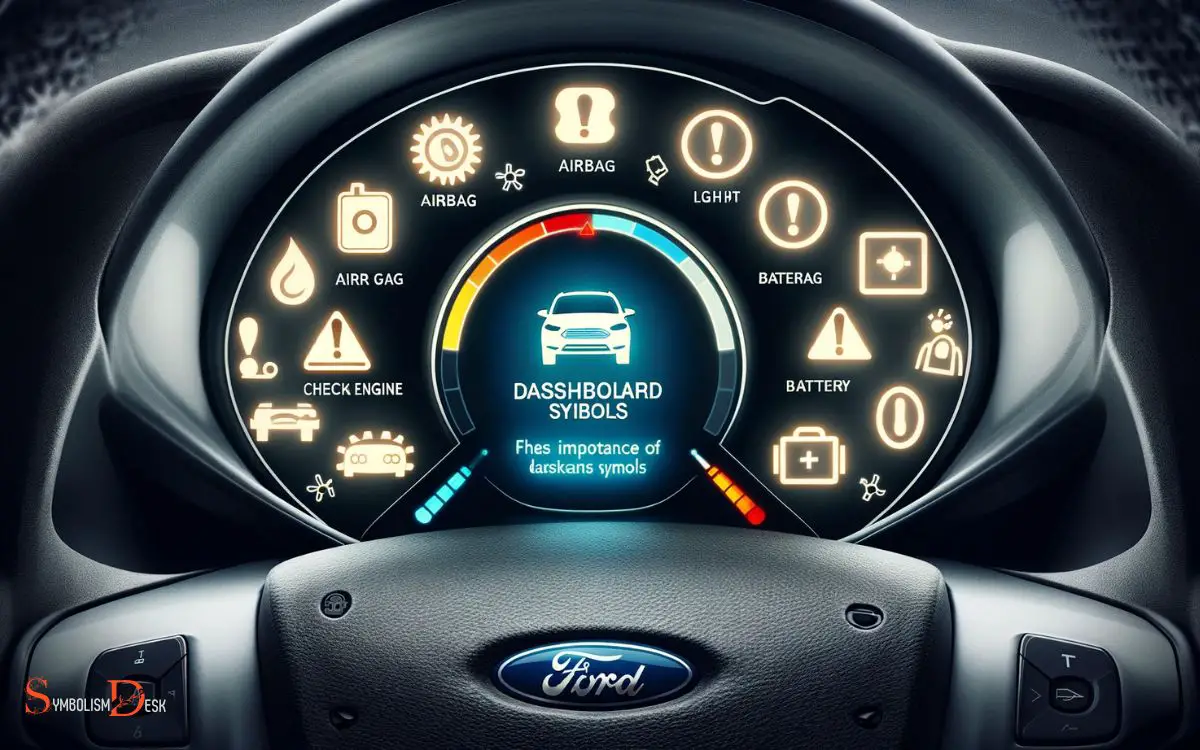
The importance of dashboard symbols lies in their ability to quickly convey essential vehicle information to the driver. These symbols serve as critical alerts, signaling everything from routine maintenance needs to urgent safety concerns. A clear understanding of these indicators helps drivers respond effectively, ensuring both the vehicle’s longevity and their own safety. For instance, a comprehensive BMW dashboard symbols explanation can empower BMW owners to interpret warnings correctly and address potential issues before they escalate.
When a symbol lights up on the dashboard, it serves as a direct and immediate way for the car to communicate with the driver.
This is particularly crucial because it allows the driver to address any potential issues promptly and take necessary action to ensure vehicle safety and performance.
Dashboard symbols also help drivers stay informed about the status of their vehicle, such as low fuel, engine problems, or tire pressure issues.
By understanding these symbols, drivers can make informed decisions about when to refuel, address maintenance needs, or seek assistance.
Ultimately, the use of dashboard symbols enhances the overall driving experience by promoting safety, efficiency, and proactive vehicle care.
Common Dashboard Symbols and Their Meanings
Dashboard symbols serve as essential indicators, conveying important vehicle information to drivers, facilitating prompt responses to potential issues such as low fuel, engine problems, or tire pressure.
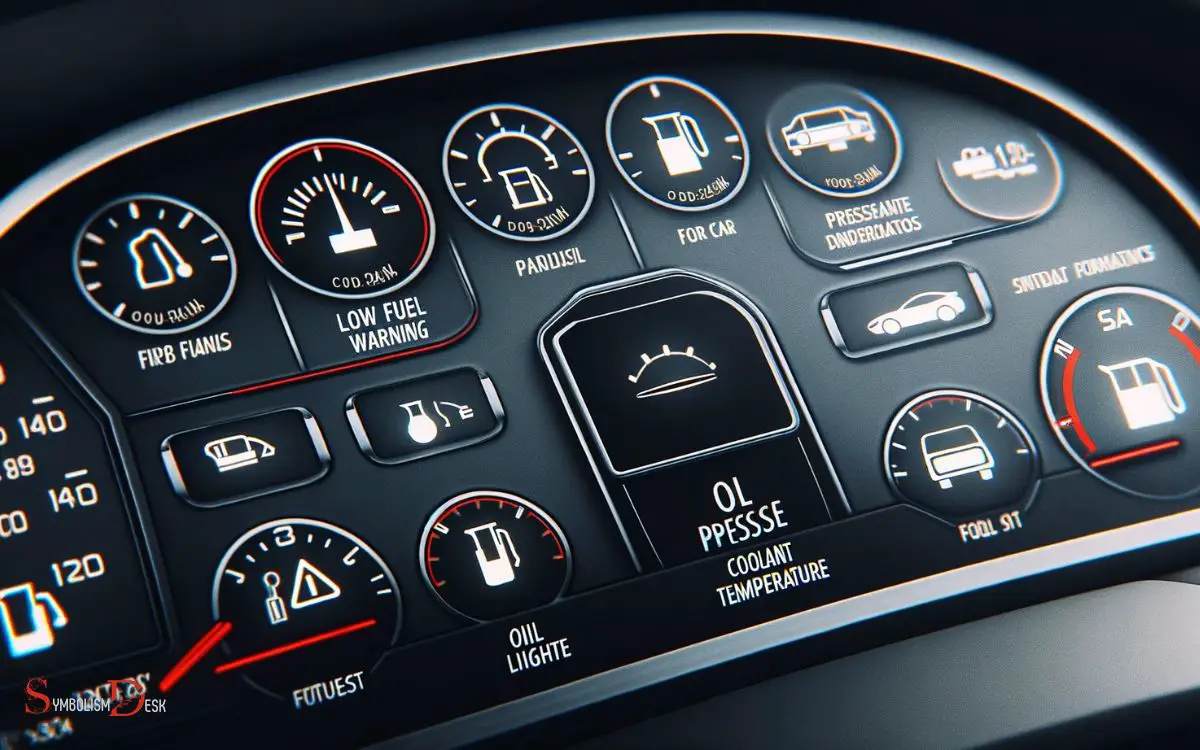
Understanding these symbols is crucial for maintaining vehicle health and safety. Some common dashboard symbols and their meanings include:
- Check Engine Light: Indicates a problem with the engine that needs immediate attention.
- Oil Pressure Warning: Alerts the driver to low oil pressure, requiring an oil check or refill.
- Battery Alert: Signals issues with the vehicle’s charging system or battery.
- Tire Pressure Monitoring System (TPMS) Light: Warns of low tire pressure, necessitating inflation or a possible puncture repair.
- Fuel Warning Light: Indicates low fuel levels and the need to refuel soon to avoid running out of gas.
Understanding Warning and Indicator Lights
Understanding warning and indicator lights is crucial for drivers, as they frequently provide vital information about the vehicle’s health and performance.
When these lights illuminate on the dashboard, they serve as a means of communication from the car to the driver, alerting them to potential issues or the need for maintenance.
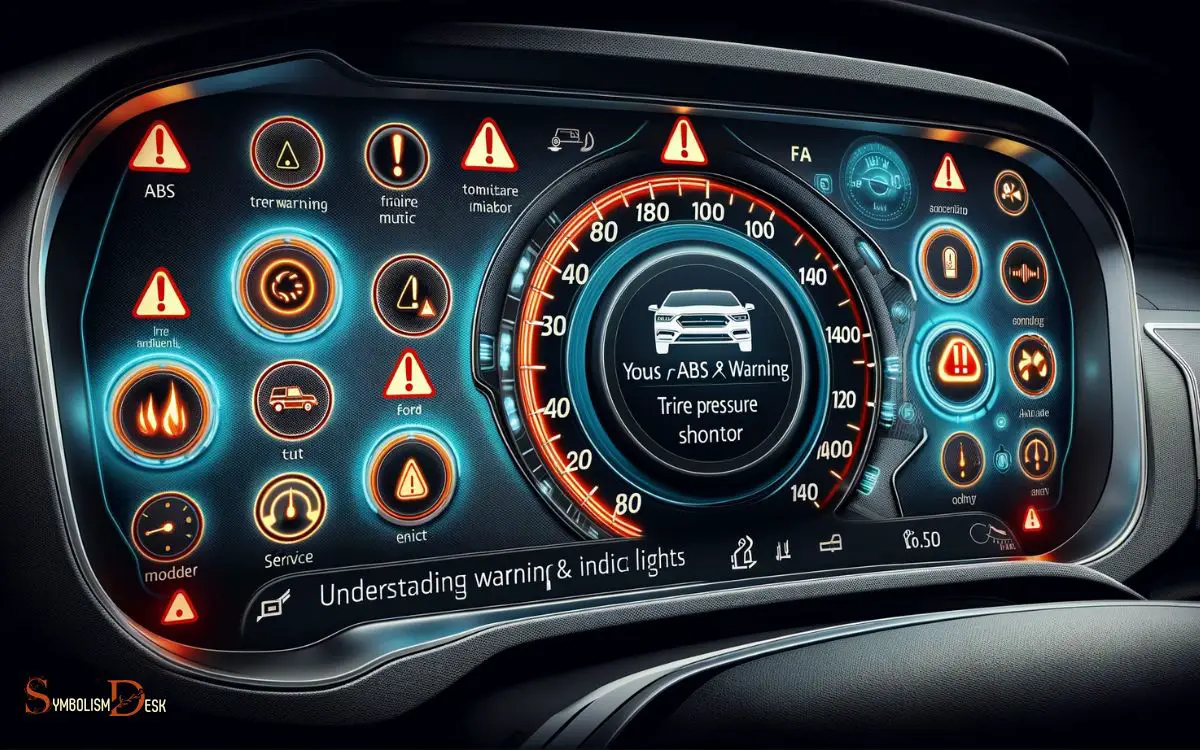
Here is a simple breakdown of some common warning and indicator lights:
| Warning Lights | Indicator Lights |
|---|---|
| Check Engine | High Beam |
| Oil Pressure | Turn Signal |
| Battery | Fog Lamp |
Deciphering Engine and Maintenance Icons
Drivers frequently encounter engine and maintenance icons on their car’s dashboard, providing crucial insights into the vehicle’s performance and health. Understanding these symbols is essential for proper vehicle maintenance.
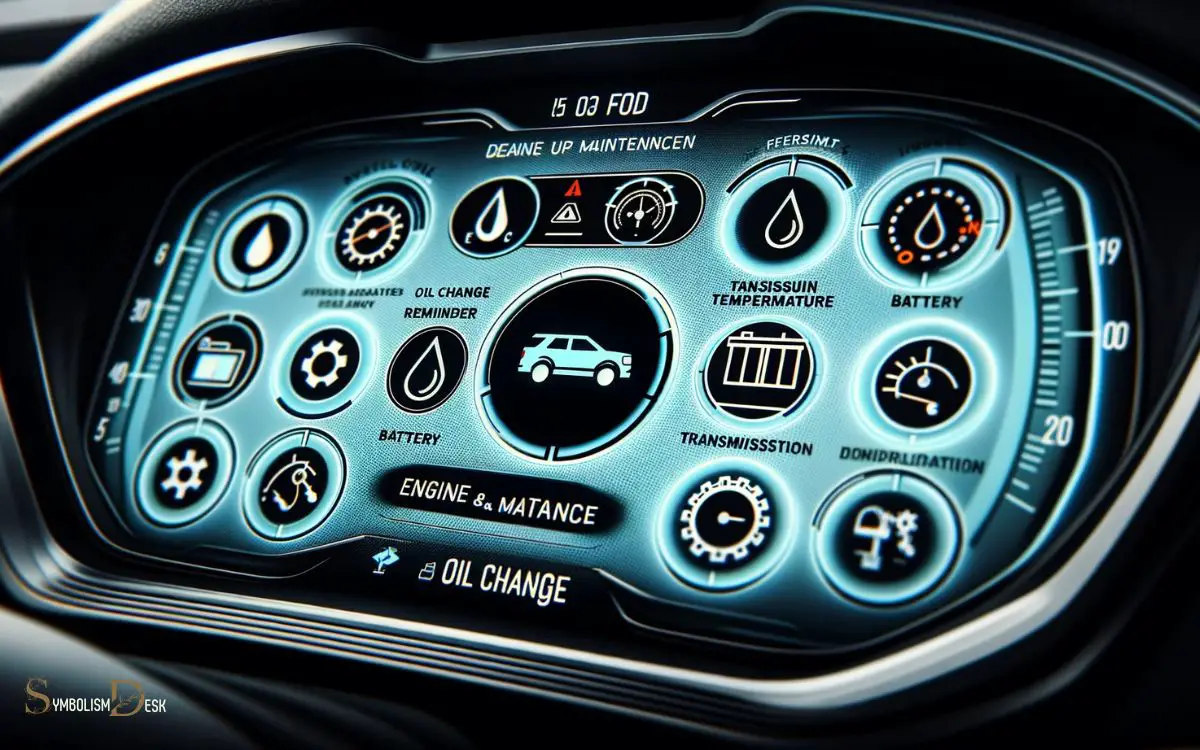
Here are some common engine and maintenance icons and their meanings:
- Check Engine Light: Indicates a problem with the engine or emission control system.
- Oil Pressure Warning: Alerts about low oil pressure, signaling potential engine damage.
- Battery Alert: Indicates a malfunction in the charging system or low battery voltage.
- Coolant Temperature Warning: Signals that the engine is overheating, requiring immediate attention.
- Service Vehicle Soon: Indicates a non-specific issue that needs to be addressed by a mechanic.
These symbols serve as early warnings, allowing drivers to address potential issues before they escalate.
Exploring Electronic and Safety Symbols
When it comes to driving, understanding safety indicators and electronic system warning lights is crucial for vehicle maintenance and safe operation.
Decoding dashboard symbols can help drivers effectively address any issues that may arise while on the road.
It’s essential for drivers to familiarize themselves with these electronic and safety symbols to ensure the proper functioning of their vehicles.
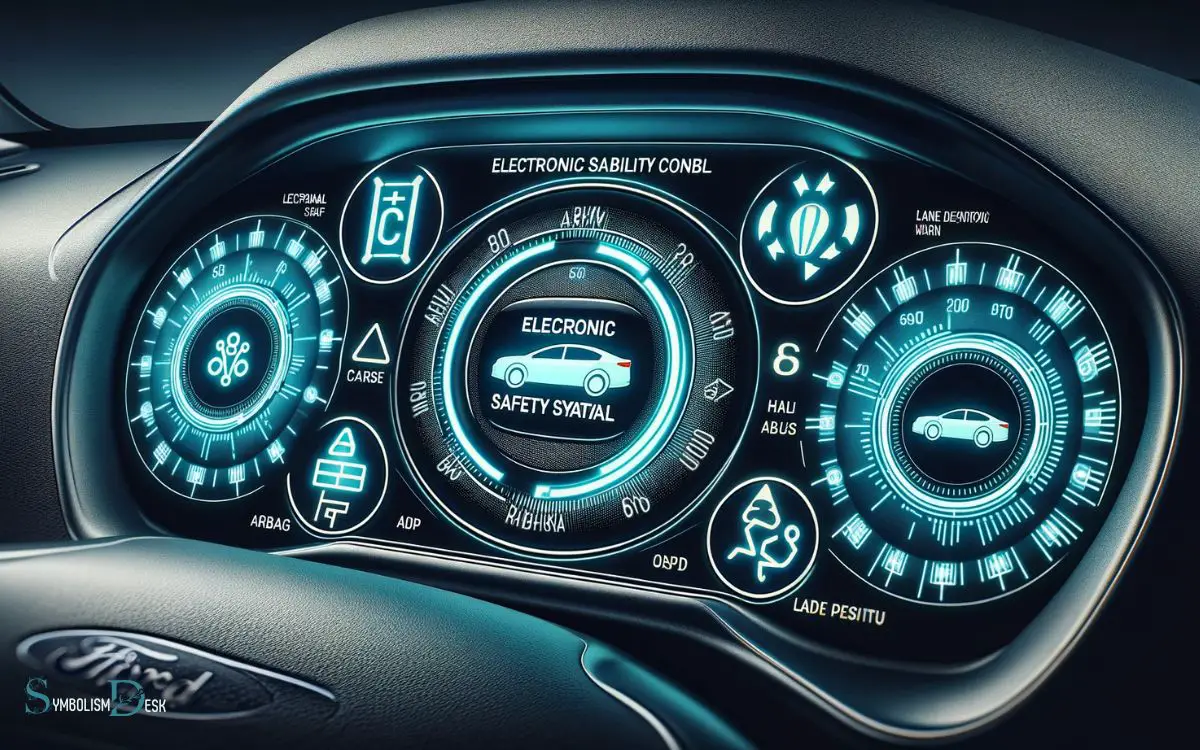
Understanding Safety Indicators
Safety indicators on a car’s dashboard convey vital information about the vehicle’s electronic and safety systems. Understanding these symbols is crucial for ensuring a safe driving experience.
Here are some common safety indicators and their meanings:
- Airbag Indicator: This light signifies an issue with the airbag system and should be inspected by a professional.
- ABS Warning Light: This indicates a problem with the anti-lock brake system and requires immediate attention.
- Traction Control Light: When this light is on, it signifies that the traction control system may need to be checked.
- Tire Pressure Monitoring System (TPMS) Light: This light indicates low tire pressure and should be addressed promptly to avoid potential safety hazards.
- Seat Belt Reminder: This light reminds occupants to fasten their seat belts for safety.
Understanding these symbols can help drivers address potential safety issues promptly.
Electronic System Warning Lights
The article explores the electronic system warning lights, providing clarity on the various symbols and their meanings for Ford vehicles. Electronic system warning lights indicate potential issues with the vehicle’s electronic and safety systems.
The symbols can vary but often include indicators for the anti-lock braking system (ABS), electronic stability control (ESC), tire pressure monitoring system (TPMS), and electronic power steering (EPS).
Understanding these symbols is crucial for maintaining the vehicle’s safety and performance. For instance, the ABS light warns of potential issues with the anti-lock braking system, while the ESC light indicates problems with the vehicle’s stability control.
It’s important for Ford vehicle owners to familiarize themselves with these symbols to ensure prompt attention to any issues that may arise with the electronic and safety systems.
Decoding Dashboard Symbols
An understanding of the electronic and safety symbols displayed on the dashboard of Ford vehicles is essential for maintaining optimal performance and safety.
When decoding dashboard symbols, it’s important to consider:
- The airbag warning light, indicating an issue with the airbag system.
- The tire pressure monitoring system (TPMS) light, signaling low tire pressure.
- The traction control light, suggesting a problem with the traction control system.
- The electronic stability control (ESC) light, indicating a potential issue with the system.
- The seat belt reminder light, reminding occupants to buckle up for safety.
Deciphering these symbols can help drivers address potential issues promptly, ensuring the vehicle’s electronic and safety systems are functioning as intended. Understanding these symbols contributes to a safer and more reliable driving experience.
Tips for Responding to Dashboard Symbols
Drivers should promptly address any dashboard symbols that appear in their Ford vehicles to ensure smooth and safe operation. Ignoring these symbols can lead to potential mechanical or safety issues.
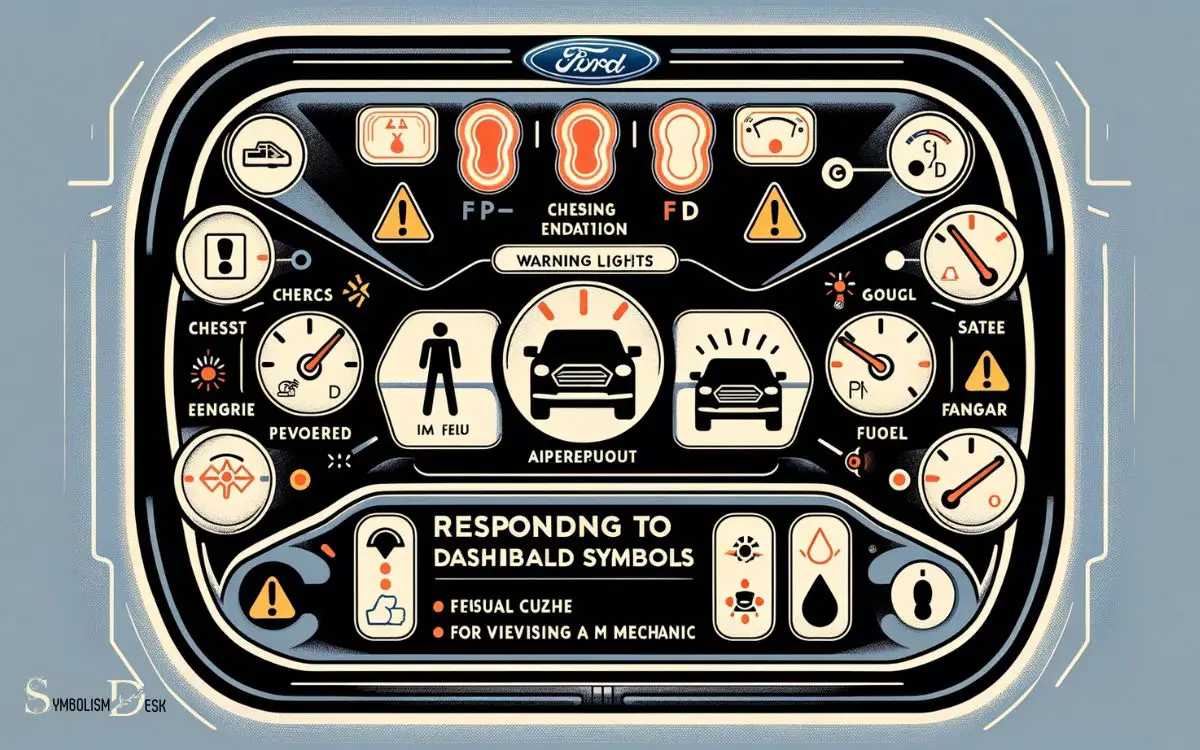
Here are some tips for responding to dashboard symbols in a Ford vehicle:
| Symbol | Meaning | Action |
|---|---|---|
| Check Engine Light | Indicates an issue with the engine or emissions | Schedule diagnostic testing with a mechanic |
| Oil Pressure Light | Indicates low oil pressure in the engine | Stop the vehicle and check oil levels |
| Tire Pressure Light | Indicates low tire pressure | Inflate tires to the recommended pressure |
Conclusion
It’s always a joyride trying to decode the mysterious hieroglyphics of your car’s dashboard. Remember, when the little glowing symbols start to light up like a Christmas tree, it’s just your car’s way of playing a fun game of charades.
So, buckle up and enjoy the guessing game as you navigate the perplexing world of car dashboard symbols and meanings. It’s all just part of the thrilling adventure of car ownership. Cheers to the enigmatic language of cars!






